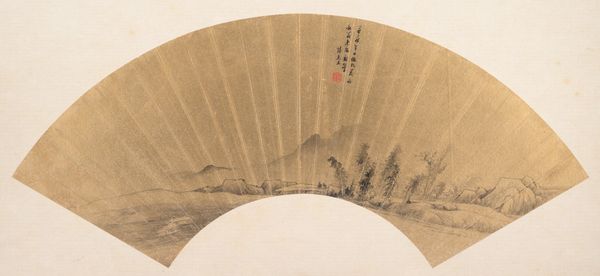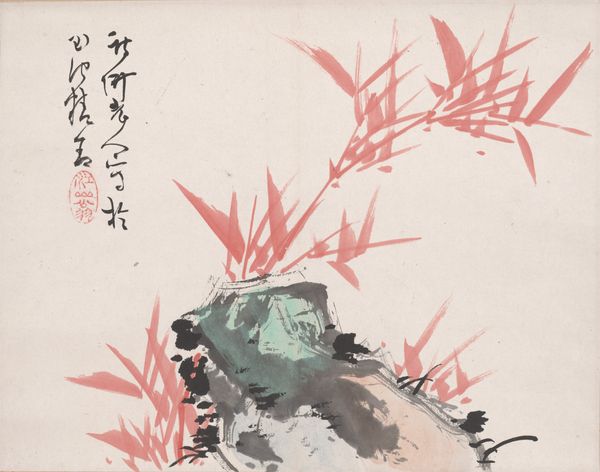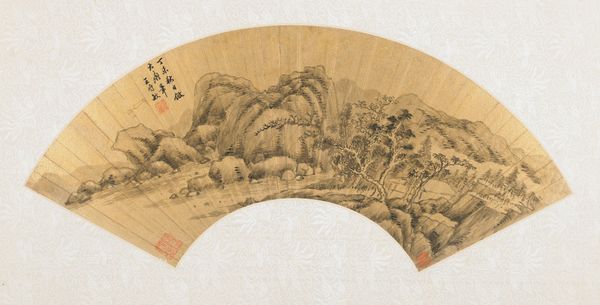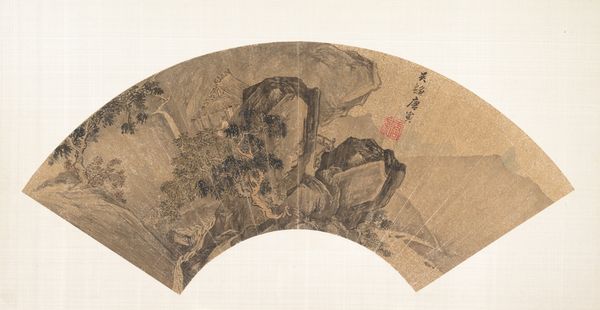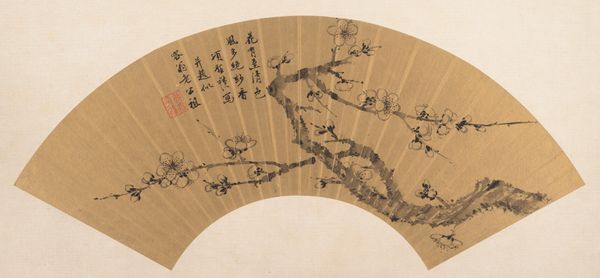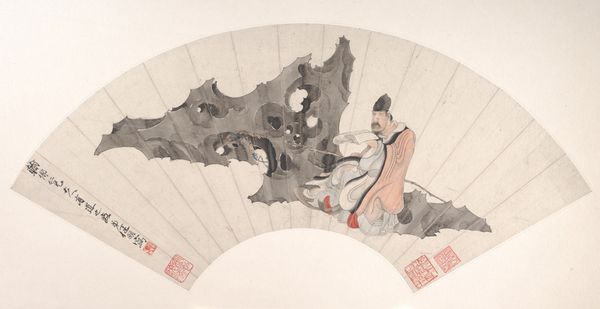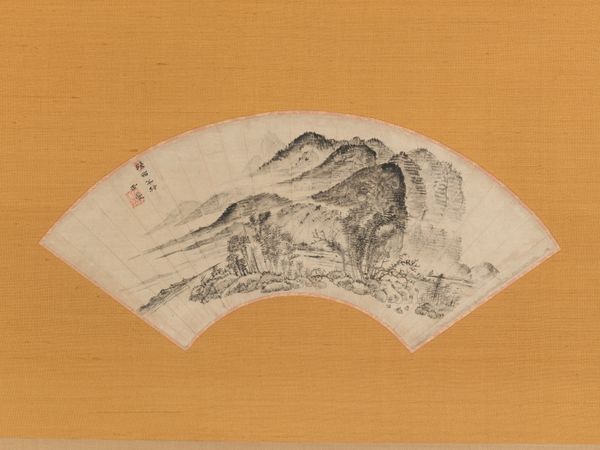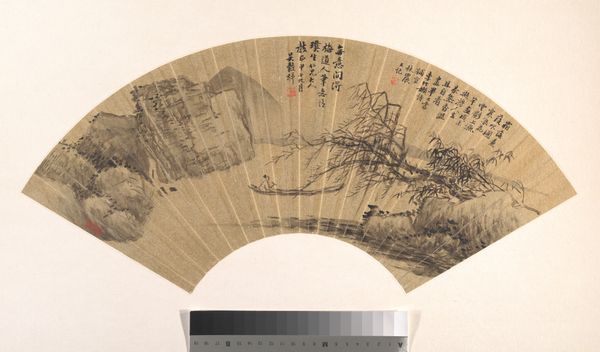
drawing, paper, ink
#
drawing
#
asian-art
#
landscape
#
paper
#
ink
#
china
#
line
Dimensions: 23.5 × 51.5 cm (9.3 × 20.3 in.)
Copyright: Public Domain
Here we have Rushan's ink on paper work, “Taihu Rock,” at the Art Institute of Chicago. This piece invites us to consider the deep cultural significance of scholar's rocks in Chinese art and philosophy. Scholar's rocks, like the Taihu variety depicted here, were not just decorative objects. They were seen as microcosms of the natural world, embodying cosmic energies and serving as objects of contemplation for the educated elite. These stones, with their naturally eroded surfaces, were highly valued for their ability to evoke the sublime. In traditional Chinese society, where social status was often tied to education and refinement, collecting and appreciating scholar's rocks was a way to perform one's cultural capital. The holes and contours are not merely aesthetic features, but a reflection of the Daoist principles of emptiness and interconnectedness. This artwork, therefore, functions as both an aesthetic object and a marker of social and intellectual identity, inviting reflection on the relationship between nature, culture, and self.
Comments
No comments
Be the first to comment and join the conversation on the ultimate creative platform.
